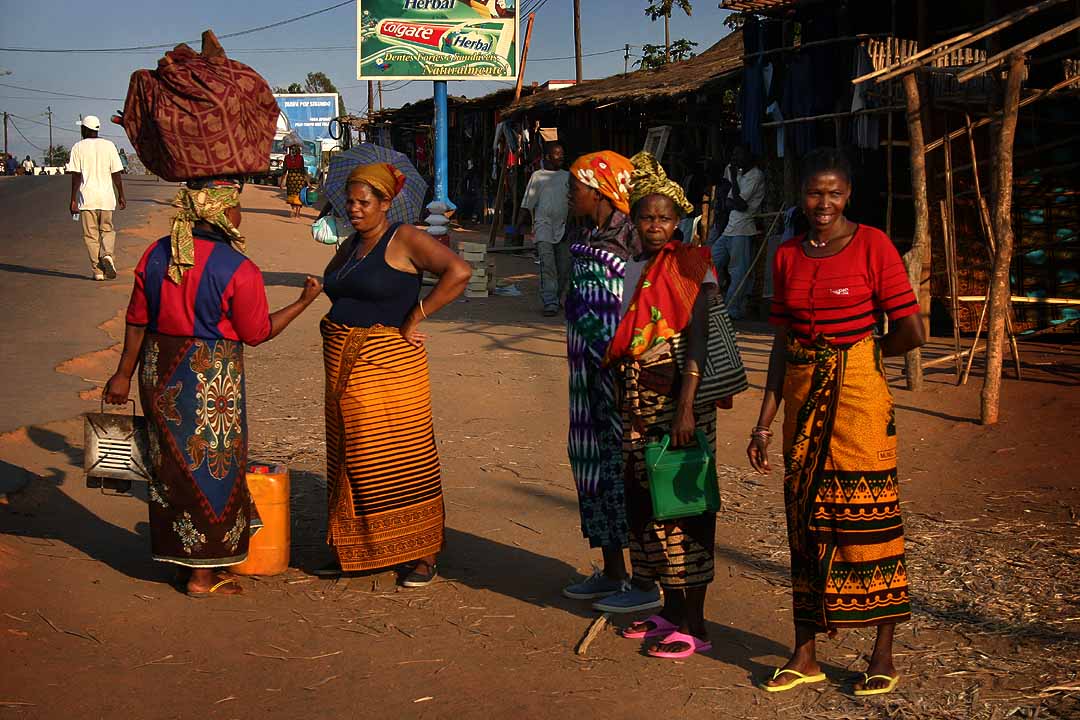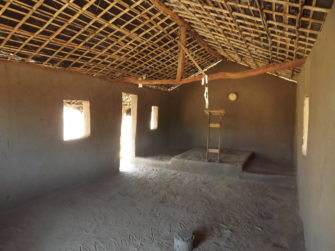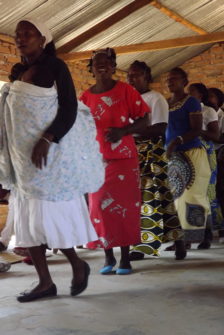
Devaka Premawardhana’s Faith in Flux is a beautifully written and conceptually rich work that successfully challenges central theoretical assumptions about Pentecostalism in Africa today: that it entails a rupture with the past, especially “traditional” ways of being, and that its spread and imaginal hold has been ubiquitous. Asked to reflect on how Premawardhana’s book resonates with my own, An Intimate Rebuke (2018), I wondered how my study of female genital power (FGP) in the indigenous traditions of West Africa could possibly relate to a work on Pentecostalism in northern Mozambique. Most consonant is a common claim that underlying matrifocal traditions endure and have the capacity to evade the encroachments of a masculinized modernity.
Both our works employ a “bottom up” approach, one that does not deny or minimize the “influence of global forces on local worlds” but reasserts the primacy of local ontologies. Premawardhana’s focus on the “easily overlooked registers” of lived practice (15) is akin to my efforts to make visible the subjugated knowledge of female power. My book strings together the beads of evidence of an ancient and widespread, but often overlooked, “local” ritual of anti-witchcraft, and shows it to embody a foundational African principal: Post-menopausal women, called the Mothers, wield an innate moral authority. Stripping and exposing their breasts and genitals as the seat of their power, they curse any who violate the moral mandates. Women deploy their “bottom power” as a spiritual weapon, but also mobilize and perform FGP to protest the state’s abuse of secular authority. So I argue that the Mothers’ embodied rebuke challenges the meta-narratives of modernity that assume that only a rupture with traditional ways can usher in greater liberation and empowerment. Likewise, Premawardhana reads the everyday occurrences of the Makhuwa people against the grain of well-worked theoretical assumptions about tradition’s inflexibility. Challenging the idea that African Pentecostalism is experienced as a radical break from local tradition, his “counternarrative” relates a more fluid account of conversion, presenting it as an oscillation between different ways of being (19). Living for a year among the Makhuwa, Premawardhana notices that their “pluralistic disposition” allows them to subscribe to multiple, conflicting religious doctrines, depending on context (104). This is not so much a matter of “syncretism” as an expression of their value of community and the “imperative of intersubjectivity” (105). It allows “conversion” to be sincere, even if fleeting or occasional.
The nomadic Makhuwa have a “long history of not just mobility, but mobility of the circular kind” that allows for return and renewal (64). Their “existential mobility” keeps their traditions vital; when faced with the external pressures of masculinizing modernity, the “matricentric” Makhuwa choose migration over confrontation and capitulation. Such flexibility contrasts sharply with the fixity of the state and its development policies that depend on firmly situating its peasantry within its borders. But Makhuwa mobility only challenges the impositions of the state obliquely. By contrast, in West Africa the Mothers’ public performance of the spectacular rite of FGP directly confronts the postcolonial state and condemns its cruel and brutal violence overtly.
An Intimate Rebuke makes “matrifocal morality” the principle underlying the various manifestations of FGP in ritual and politics, and also shows it to be the founding knowledge and binding power that lends cultural coherence to a plethora of traditions in the region. Premawardhana similarly reaches for an overarching vision, aiming to interpret Makhuwa Pentecostalism as a variation on “the theme of centripetal motherhood traced throughout this book” (165). However the book actually offers only two points of entry for understanding “the matricentric character of Makhuwa society” (25). Ironically, the first and main one is Premawardhana’s analysis of male initiation.

Building on Arnold van Gennep and Victor Turner’s classic analyses of the symbolic meaning and transformative power of movement through spatial planes, Premawardhana emphasizes the initiates’ multiple, literal processions to show that they foster “border consciousness” (90). His thesis is that the site of self-making is “full of discontinuous and non-contiguous domains” that instill “dispositions toward malleability” and make Makhuwa see rupture as “routine” (90–91). However, the most crucial moment of initiation is not about clean borders and discontinuities. It is a ritual genital modification that inscribes on the body a symbolic conflation of genders. Premawardhana calls it “circumcision,” although he acknowledges that the operation “does not entail the removal of foreskin, but rather a slit across the top of it” (86). Unlike circumcision that “purifies” men of gender ambiguity by removing excess flesh suggestive of the labia, the object is to draw blood. This “mimesis of menstruation” is clearly referenced by the boys’ ritual guardians who sing, “The vagina has opened!” They explicitly state, “you are imitating your mother,” and make the boys submit to the taboos of menstruating women (86–87). Significantly, Makhuwa neophytes are not permanently separated from the female domain but are returned to their mothers who readily identify and reclaim them. Consideration of penile subincision rites elsewhere would have revealed the procedure’s significance as a symbolic usurpation of female power and gender doubling. In a subsequent chapter we belatedly learn that the Makhuwa measure time by the phases of the moon, which are associated with the cyclical rhythm of women’s menses; that the full moon is the time of contact with the ancestral spirits; and that women exclusively act as healers who perform their work at night (124). Subincision and bleeding clearly allow men to capture ritually the natural cyclical movement and innate capacity for renewal as their own. Premawardhana suggests the boys temporarily “pass through womanhood” in order to become differentiated from women (89). But Makhuwa subincision actually seems to establish the permanent assimilation of men with women in order to acquire their innate sacrality.
Whether through initiation “gender boundaries are thus simultaneously constructed and traversed” (91) remains a question, rather than a conclusion, for although Premawardhana notes that Makhuwa girls’ initiation takes place at the same time as the boys’, we learn nothing more about it. The male ritual stands as the sole basis of Premawardhana’s theory. Premawardhana’s focus on the male ritual reinforces the stereotype of women’s natural profaneness and subordinates their biological capacities to male religious culture. However, Makhuwa tradition, stories, song-riddles, and even the etymology of the sacred mountain who is mother of humanity (“she who menstruates”), combine to demonstrate that for the Makhuwa, God is not just “conceived of in feminine terms” but is female (124).
The second, more promising point of entry for understanding Makhuwa matricentricity is an exclusively female healing society. When Premawardhana finally turns attention to this traditional domain, he allows himself to be teased by men into intruding into the women’s sacred circle (124). He submits that he was authorized to “violate the gendered divide” by the healer’s husband who urges Premawardhana to observe it “up close,” and who accompanies him into the hut (124). As in the case of female initiation, however, we never learn any details. More might have been made of the woman’s ability to make bodies whole, or of the sinuous meanderings of the eyinlo, the dance ceremony performed “almost entirely by women” that Premawardhana mentions earlier and only in passing (138). As it stands Makhuwa matricentricity remains an abstraction, a shadow, known essentially through the “side-stepping” moves taken to avoid the fixity and permanence that conversion to Pentecostalism supposedly demands.
Chapter 5 in Part III alone attends to the subject of women directly, especially their status in Makhuwa society. It attempts to account for informants’ regular assertion that “Makhua women have no religion” (117). By “religion” they mean Christianity or Islam, and the comment refers to the fact that “girls follow the religion of their maternal uncles; wives follow the religion of their husbands” (117–18). Premawardhana reinterprets the statement, suggesting that it is not about the modern patriarchal constraints that make it impossible for women to choose their own affiliations voluntarily, but something “quite the opposite of internalized oppression” (129). His creative analysis regularly represents the current women’s situation, no matter how diminished or subjugated, as a defiant retention of traditional power, arguing that it is women’s exclusion from the processes of modernization that has enabled them to preserve matricentric Makhuwa ways (117).
Although he recognizes that women’s lack of access to education was “a travesty” that undermined their prospects in an increasingly cash-based economy, he proposes that this made women “the more accomplished evaders” of a masculinized modernity (131–32). By Premawardhana’s reasoning, it is “because of, not in spite of, the prestige they ‘lack’ today” that women have been able to retain social standing (131). He builds his case on the fact that “in the realm of domestic cults… it is not the wife who follows the ‘religion’ of the husband but exactly the opposite” (126). Even so, he questions whether the matrilineal “domestic ancestral cults” qualify as “religions” (126). With this clever move Premawardhana simultaneously makes the assertion that “women have no religion” appear liberating, and establishes an affinity between women’s indigenous traditions and the embodied, oral expressions characteristic of Pentecostal forms of worship which, he argues, similarly “barely register as religions” (129). Another supposed “collateral benefit” of women’s marginalization from “world religions” (a loaded term that Premawardhana unfortunately uses throughout unproblematically) is that women are able to “draw seamlessly from a variety of traditions, unburdened by the normative concerns of religious elites” (136). Such intellectual acrobatics also allow him to account for women’s disproportionate numbers in the otherwise flailing rural congregations and to deem it a sign of female agency. Women are supposedly attracted not because they enjoy “enhanced authority and autonomy” in that religion but “because it is not a religion” at all (129). Here it felt like truth was sacrificed to rhetoric.

Premawardhana’s poetic prose pairs “conceptual antinomies,” like mobility and return or firmness and flexibility, and works them to persuasive effect (154). His arguments hinge on the generative connection that he draws between them. But, such conceptual brilliance should not blind us from hard facts that push back against otherwise seductive intellectual reconciliations. For example, Premawardhana argues on one hand that “Pentecostal and indigenous traditions are corporeally continuous in ways that defy Pentecostalism’s rhetoric of rupture” with the past (156, emphasis mine). On the other hand, he notes elsewhere that the male Pastor’s firm handshake and rigid upright posture intentionally contrast with women’s sinuous dances and therefore represents a conscious break with the fluid dispositions of the Makhuwa somatic habitus (141, emphasis mine).
The book concludes with an anecdote about a dull Pentecostal church meeting enlivened when the minister puts forth a riddle that invites men to consider whether they owe primary duty to their mother or wife. Presented in the style of an African dilemma tale and palaver, the circular discussion is recounted to illustrate the Makhuwa “skill of polyontological mobility” (169). This ability to dissolve dilemma by embracing seemingly opposing possibilities ostensibly keeps Makhuwa “faith in flux.” (169–70). Ironically, these men “on the move” seem not to notice or care that missing from their circle of church leadership are the very women they purport to revere. While the Makhuwa case may not conform to the scholarly trend that characterizes Pentecostalism as a radical break with tradition, neither does it convincingly portray a fluid retention or cyclical movement of return to the “’Mother’ religions” that Premawardhana suggests are the essence of local ontology.

